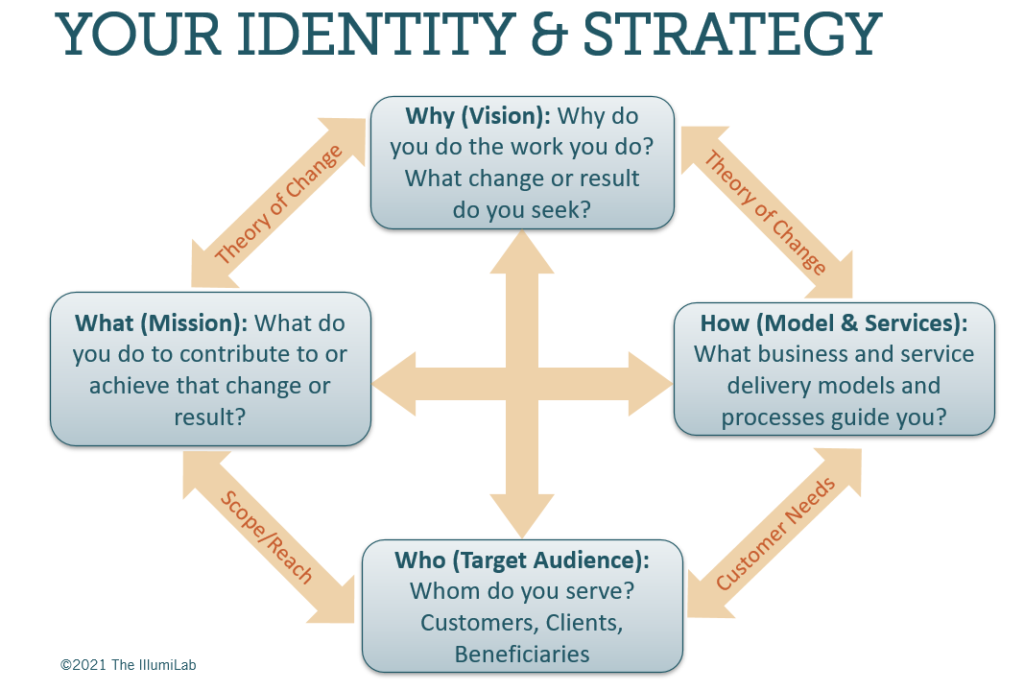In my last post, I compared four elements of your organization’s identity and strategy to four tires on a car. The tires must be equally and properly inflated, pointing in the same direction, and with enough tread to grip the road if you expect them to get you to your destination. In this post, I’ll share some common management and design tools that can help you ensure your four tires are pointed in the same direction. What do I mean?
Your What and How should be tailored to the needs of your Who and robust enough to make a significant contribution to your Why. Make sure you are reaching the right Who in order to achieve your Why and that your Why is, in fact, what your Who want and need. Your How should be accessible and acceptable to your Who. And so on . . .

Tools to Create Alignment
One of my favorite tools is a Theory of Change because it surfaces and articulates an organization’s assumptions and beliefs about what conditions are necessary and sufficient to create the change they seek. In doing so, it makes clear – in a cool visual map – why the organization does what it does in the ways that it does. A Theory of Change is a primary tool to help an organization align its Why, What, and How.
Another tool that helps us create alignment in our strategy is needs assessment. Let me pause and acknowledge how costly, time-consuming, and difficult it can be to gather new, primary, community-wide or population-level data to identify unmet needs. But that is not the only way to assess needs. Gather data to describe the characteristics, histories, experiences, and needs of those you currently serve, those who seek but don’t qualify for your services, those served by similar or related organizations, etc. These data can help you understand the size of your Who, so you can scale your What. They can help you know which How your Who prefers, and which Why your Who strives for.
The Bottom Line
Any reconsideration of an organization’s strategy needs to consider all four elements in relation to one another. An adjustment to one requires a careful review of and adjustments to the others. When one gets jostled, they all need to attention
